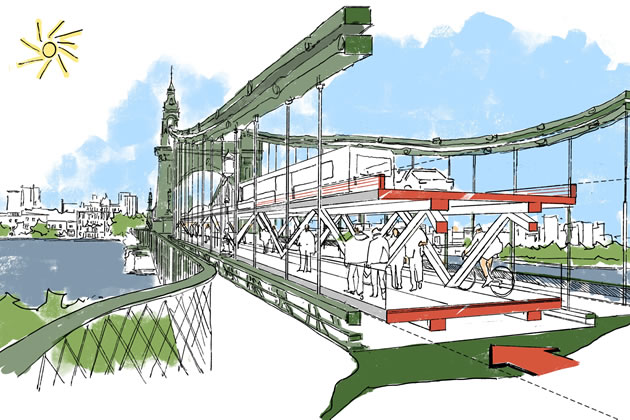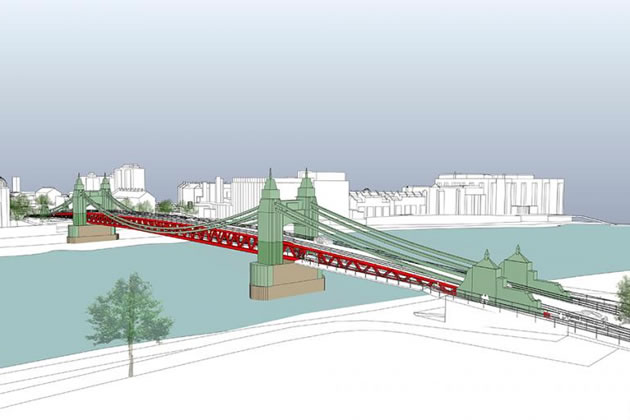Double-decker Hammersmith Bridge To Be Investigated Further
Feasibility study into design which would allow motor vehicles to cross

An artist's impression of proposal for Hammersmith Bridge. Picture: Foster + Partners
Hammersmith Bridge could be transformed into a “double decker” crossing by next summer which would allow motor vehicles get over the River Thames while the iconic structure is fixed.
Engineering firm Foster + Partners and bridge engineers Cowi has been awarded funding by Hammersmith & Fulham Council to see if its idea is practical. The 135-year-old bridge has been shut to vehicles since April 2019 and the bridge is not expected to be fully fixed until 2027.
Last year a six-week long technical study conducted jointly by Foster + Partners and COWI, which concluded that a temporary double-decker crossing was feasible using the existing bridge foundations. The council described it as ‘an exciting option’ which it wished to explore further alongside other solutions.
A full feasibility study will now be carried out as part of a £3.5m investment by the council which will also investigate how strong the bridge’s foundations are and what weight it can hold. The investment was confirmed at Hammersmith and Fulham’s cabinet meeting on Monday 7 March.
During the meeting council leader Stephen Cowan explained the bridge was still “shaking violently” and needs constant surveillance to make sure it is safe.
The double-decker temporary crossing would run above the deck of Hammersmith Bridge and would allow drivers to pass over building works while permanent repairs are brought in, the New Civil Engineer reported.
Backers of the double-decker bridge believe it could shave £40million off the cost of fixing the Victorian bridge. If the plans get the green light then the double-decker crossing could open early next summer before opening to motorists two months later.
Ramps would be put in place for cars to drive onto and then they would be ferried across the bridge. In the meantime, engineers would be able to remove lower parts of the bridge and complete building works.

An artist's impression of proposal for Hammersmith Bridge. Picture: Foster + Partners
By removing parts of the bridge and original road the bridge would be lighter so it is hoped the new layer would not cause the bridge more stress. Engineers would drop parts of the bridge down to barges waiting on the River Thames. These parts can then be taken off and fixed elsewhere.
Jacob Phillips - Local Democracy Reporter
March 11, 2022